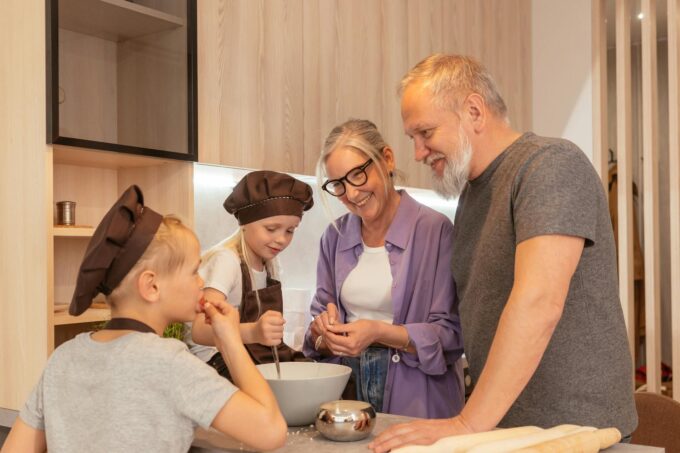Every family has those signature dishes, the ones that transport you back in time with a single bite. They’re not just about the ingredients; they’re infused with stories and memories whispered down through generations. But as time marches on, those precious VHS tapes filled with Grandma in her culinary element become brittle testaments to a fading era. This begs the question: how do we keep these culinary traditions alive and share them with future generations?

Photo by Mikhail Nilov
Cherished Recipes and Memories
Grandma, the undisputed queen of the kitchen, used to whip up Sunday roasts and secret-sauce delights that seemed to hold the magic of our family history. These weren’t just meals; they were stories woven into every bite. Today, with the digital revolution in full swing, those handwritten recipe cards and VHS-recorded cooking sessions face the threat of deterioration.
The Evolution of Cooking Techniques
Cooking techniques have undergone a dramatic transformation. What once simmered over open flames now gets zapped in modern appliances. Despite this evolution, the heart and flavors of traditional recipes remain timeless. Understanding these historical methods deepens our appreciation for our culinary roots and underscores the importance of preserving them.
Capturing the Culinary Journey
The act of filming Grandma preparing her masterpieces wasn’t just about capturing a recipe; it was about preserving her unique spirit, her voice, and the magic touch she brought to the kitchen. These videos are a treasure trove, brimming with presence and a tangible connection to our heritage. Unfortunately, many of them are trapped on outdated formats like VHS tapes.
Digitizing Family Recipes: Bridging the Gap
To bridge the gap between cherished memories and modern accessibility, converting your video tape to digital is essential. This process, also known as VHS digitization, doesn’t just protect these recordings from physical decay; it breathes new life into them, making them accessible to families across the globe. By digitizing these recipes, we ensure that the legacy and love poured into each dish continues to nourish future generations.
Techniques for Digitizing Old Recipes and Cooking Videos
Digitizing old recipes and cooking videos involves several steps. It starts with the safe handling of your old VHS tapes, then choosing a reliable service that specializes in VHS digitization or you can also do it by following easy and simple VHS digitizer self guide.
These services use modern technology to convert your cherished videos into digital formats while maintaining the quality and essence of the original recordings.
Sharing and Preserving for Generations
Once digitized, these recipes and cooking tutorials can be easily shared with loved ones. Cloud storage, social media platforms, and even digital cookbooks become vessels for these culinary heirlooms. This not only safeguards the legacy but also strengthens family bonds as stories and recipes continue to be passed down, keeping the flame of tradition burning bright.
To Wrap Up
The act of preserving grandparents’ cooking legacies is a meaningful journey that connects us with our past and enriches our future. Through the power of digital technology, we can ensure that these precious memories and flavors are not lost. By taking steps to digitize these invaluable resources, we safeguard them for future generations, keeping the family legacy alive for years to come. As we continue to embrace modern technological solutions like VHS digitization, we hold onto the essence of our heritage and keep the spirit of our ancestors vibrant and enduring.














